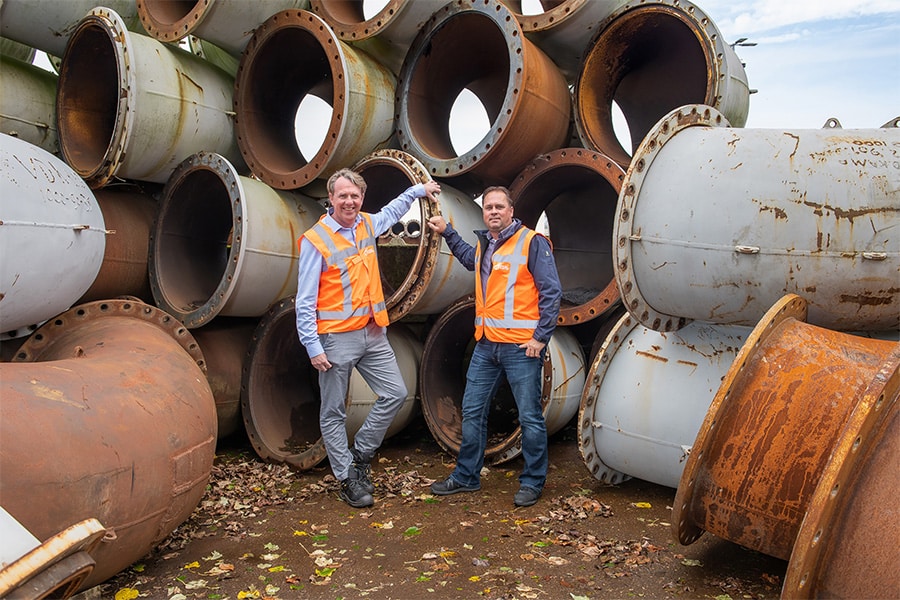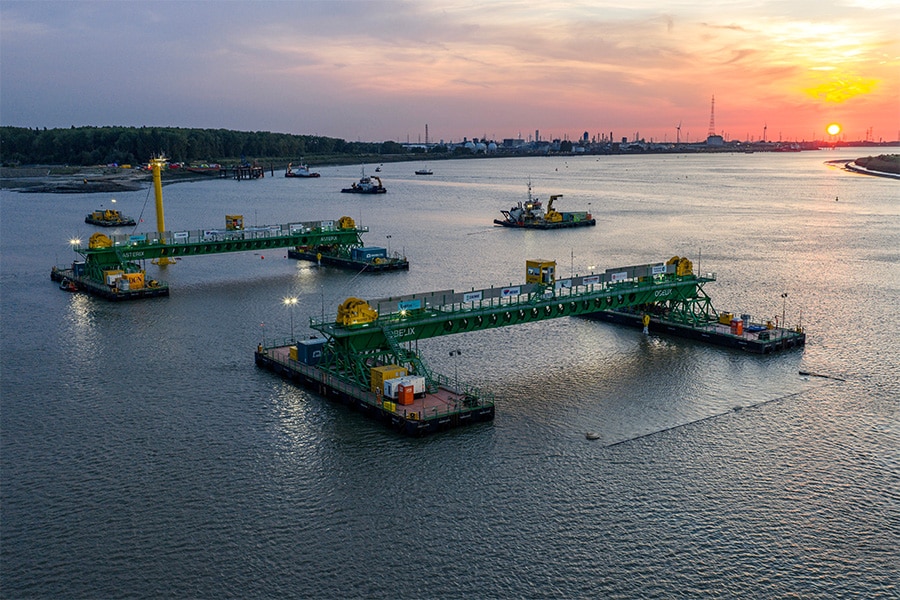
Harlingen is working hard on the future of the Afsluitdijk
If there is one thing that all employees at Levvel share, it is the pride with which they are working on the renovation of the Afsluitdijk, commissioned by Rijkswaterstaat. That certainly includes Martin Slagboom (working for Van Oord), Operations Manager Dike, Dams & Ports and Frank van de Geijn (working for BAM), Manager Production Facility. Levvel consists of the companies Van Oord, BAM and Rebel.
We are on the site of the production facility for Levvel blocs, in Harlingen. In 2018, the site where the factory has risen was nothing more than a wasteland by the water. Slagboom has been involved in the operation from its preparations. He explains, "We leased this site from Port of Harlingen. A strategic choice. Harlingen is close to the Afsluitdijk, there is a sand and gravel supplier -Spaansen- around the corner and the fact that we are by the water makes transport by water possible." In 2018, Slagboom began preparations. "I had to make quarters and set up the place."
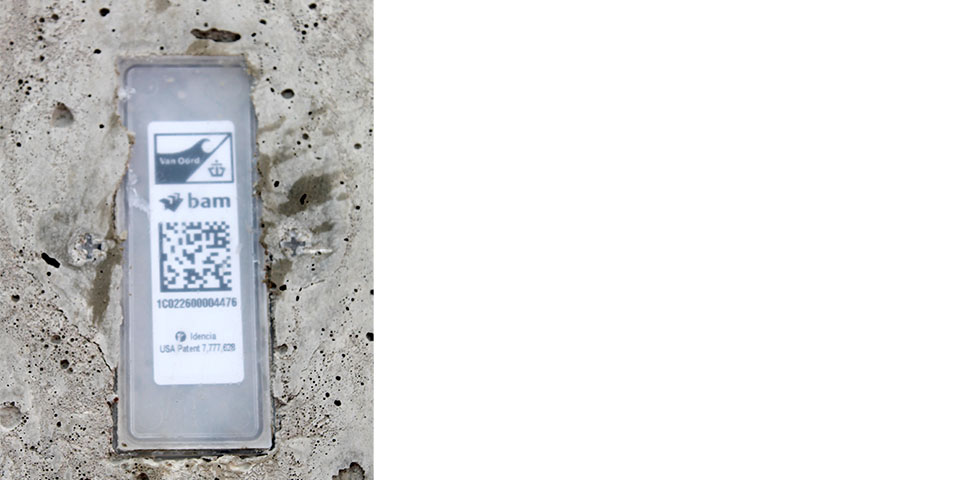
Close up of an embedded RFID chip.
From pasture to port with production facility
For Slagboom, the Harlingen plant began as early as the search for the suitable location. "The choice of this site was based on the combination of what can be done, what must be done and what fits within the budget. This location is favorable for the reduction of MKI (Environmental Cost Indicator) and CO2-emissions because of the logistical advantages. Because it was just a meadow, everything had to be done. Installing power, paving, erecting chain et cetera. First the production part was realized, then the logistics part, the site with its own unloading quay, separate from the dock." Slagboom performs a bridging function between what happens inside and outside.
Producing KOMO-certified concrete in-house
Levvel has trained the people working in Harlingen themselves. The Levvel block produced in Harlingen was specially developed for Levvel, based on a BAM patent, their 'XblocPlus'. This block is new, material-saving and more environmentally friendly than other solutions to reinforce dikes," Van de Geijn explains. Levvel was recently KOMO-certified to produce the concrete for the blocks in-house. "A total of 75,000 Levvel blocks are made here, in two types. The Levvel-bloc and the Berm-bloc. We place the Levvel-blocs on the lower embankment. For the top row, we use Berm-blocs to connect properly to the bicycle path that will be on the intermediate verge."
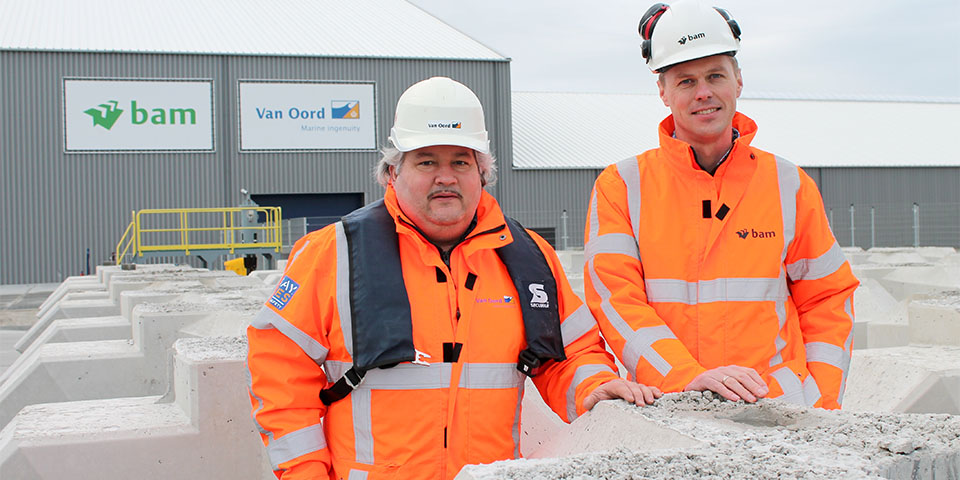
Martin Slagboom (employed by Van Oord), Operations Manager Dike, Dams & Ports and Frank van de Geijn (employed by BAM), Production Facility Manager.
One Levvel-bloc holds 2.5 cubic meters of concrete, good for a weight of about 6 tons each. "Berm-blocs use 5 cubic meters of concrete and are therefore twice as heavy," Van de Geijn said. The ingenious design of the Levvel-blocs features a hole in the middle that ensures optimal water drainage. Also, the holes serve to insert the special gripper that was developed. "With this, the blocks can be lifted and positioned," outlines Van de Geijn. Pouring the concrete is done in two-piece molds, 107 in total, which run in a carousel through the production facility. "160 carts take care of the supply and removal of the molds. This carousel is unique in the whole world and is made by KTB Machinery," Van de Geijn explains. "Ultimately, we need to move toward a production of 150 Levvel blocks per day. Every 9 minutes a Levvel-bloc is poured, one comes out of the mold and is transported outside so that it can be picked up by crane and grouped on the bag field. The total lead time including drying is 24 hours, so we are talking about 160 9-minute cycles."
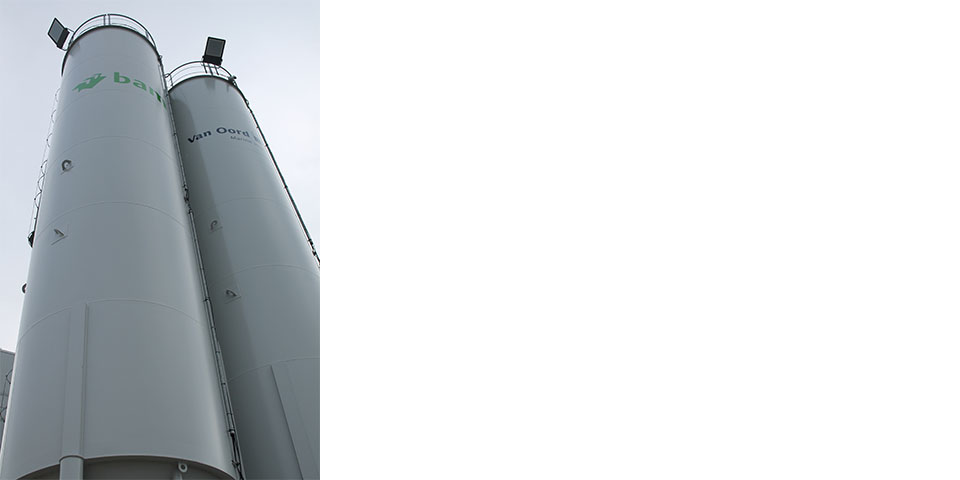
Levvel consists of the companies Van Oord, BAM and Rebel.
At the heart of the factory
An impressive spectacle plays out before our eyes as we enter the factory. We witness the stripping of a verge-bloc, which has just been brought in on a cart via the rails. "The concrete mix is made so that a Levvel or berm-bloc can be demoulded after 12 to 16 hours, at a strength of 5 N/mm2. After 24 hours of hardening, it is 10 N/mm2 and liftable with the gripper," Van de Geijn said. About 800 blocks were made in Harlingen before Christmas.
The concrete used is not a typical concrete mix for precast, but a recipe developed in-house. Van de Geijn: "Blast furnace cement was used. Less environmentally damaging than Portland cement. The entire production process, including de-scaling, is automated, except for unloading and tightening the bolts of the molds and cleaning and oiling the molds. Two employees work continuously in the carousel. Two supervisors, process operators, also work there. The whole hall is basically one big machine."
Application to the Afsluitdijk
We ask Slagboom about the exact application of the Levvel and berm-blocs. He explains: "We leave the lining on the embankment, a layer of crushed stone is applied there on which the Levvel-blocs are installed. This makes it possible for us to continue working even in the winter. The Levvel blocks are installed by means of the crane pontoon with a special gripper. The crane picks the blocks directly from the adjacent pontoon with working stock. Then the blocks are placed on the embankment, roof tile by roof, chopping one after another. The Levvel blocks are positioned via automatic positioning. As soon as the screen in the crane cab indicates "green," then the "release button" can be pressed. On screen in the crane, a digital diagram is displayed, which tracks in real time how the blocs are installed and how far along they are. Each Levvel block has been given an RFID chip from the factory, which can be scanned. This makes each block identifiable and traceable. This is necessary to link the position of the block to the information stored about it, such as the production batch number."
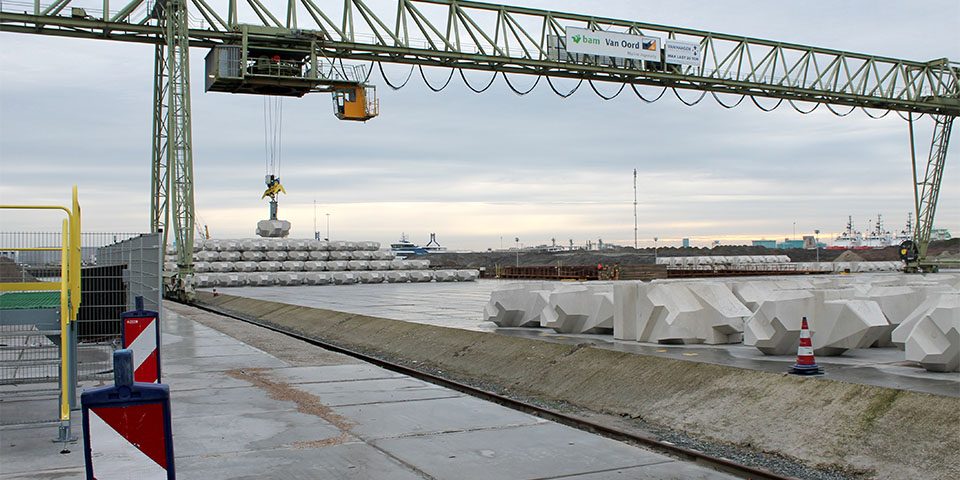
With the crane, the Levvel blocks are grouped on the bag field.
Finally, we ask what will happen to the Harlingen factory when the Afsluitdijk is renovated. Slagboom replies, "The factory is circularly built. We will be producing Levvel blocks for the next 2.5 to 3 years, after that there may be a new role for the factory."
